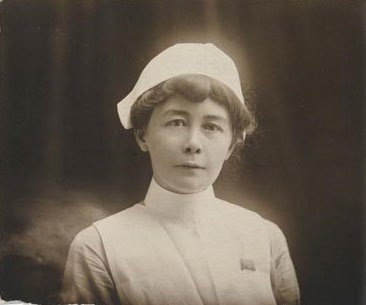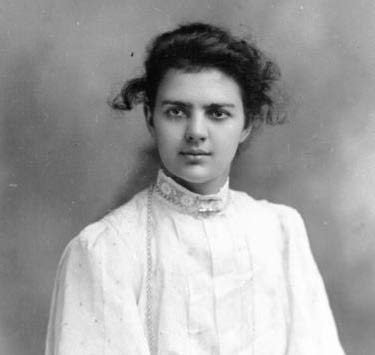27 February | Dr Mary Clementina De Garis becomes Chief Medical Officer of the Chief Medical Officer of the Scottish Womens’ Hospital, Lake Ostrovo, remaining until 30 September 1918. Born in Charlton, Victoria, she became only the second female doctor in the state’s history in 1907.
April | The Commonwealth War Cemetery at Mikra (Kalamaria) in Thessaloniki’s south-eastern suburbs receives its first burials. Within the cemetery is the Mikra Memorial, commemorating almost 500 nurses, officers and men of the Commonwealth forces who died when troop transports and hospital ships were lost in the Mediterranean, and who have no grave but the sea. They are commemorated here because others who went down in the same vessels were washed ashore and identified, and are now buried at Mikra. It now contains 1,810 Commonwealth burials of World War One, as well as 147 war graves of other nationalities.
April | The Sarigol Military Cemetery opened. Between April and June 1917, the 35th Casualty Clearing Station was at Sarigol. It was replaced by the 21st Stationary Hospital, which remained until December 1918. From these two hospitals, 150 burials were made. In February 1921, 560 graves were brought into Sarigol from Janes Military Cemetery, a few miles to the north, and serving the same front. The cemetery at Janes was on low ground, and, under the normal conditions of this region, it was found difficult to approach and almost impossible to maintain in good order. Sarigol Military Cemetery now contains 682 Commonwealth burials of World War One and 29 war graves of other nationalities.
2 July | Stella Maria (Marian) Sarah MILES FRANKLIN arrived at the Scottish Womens’ Hospital, Lake Ostrovo. She remained there until 4 February 1918 when illness forced her relocation to London. In her own words:
“These comments of a camp cook upon experiences gained as a voluntary member of the army of the British Red Cross are submitted unpretentiously for what they are worth as a document of the war. With no straining after tragedy nor attempt to picture hardships or adventures, which, comparatively, did not exist for Red Cross workers on the Salonique front from July 1917 till February 1918, perhaps they may serve to show that black though the clouds, desolate the future, there is still sunshine and laughter.”


Left: Miles Franklin. Right: Dr Mary Clementina De Garis
2 July | Miss Jean Lindsay arrived at the Scottish Women’s Hospital, Lake Ostrovo, as an Orderly, remaining until 11 May 1919.
11 July | The First Contingent of Australian Army Nursing Service personnel, led by Principal Matron Jessie McHardy White, disembarked at Thessaloniki. By year’s end, Australians comprised 20 per cent of the British nursing staff along the Front.
18-19 August | Matron Jessie McHardie White documents the Great Fire of Thessaloniki in a series of photographs, letters and diary entries. The disaster left 25,000 people homeless and hungry.
2 July | Miss Jean Lindsay arrived at the Scottish Women’s Hospital, Lake Ostrovo, as an Orderly, remaining until 11 May 1919.
11 July | The First Contingent of Australian Army Nursing Service personnel, led by Principal Matron Jessie McHardy White, disembarked at Thessaloniki. By year’s end, Australians comprised 20 per cent of the British nursing staff along the Front.
18-19 August | Matron Jessie McHardie White documents the Great Fire of Thessaloniki in a series of photographs, letters and diary entries. The disaster left 25,000 people homeless and hungry. 1918, 4 April - The Second Contingent of Australian Army Nursing Service personnel, led by Matron Jessie Rose Gemmel, disembarked at Thessaloniki.